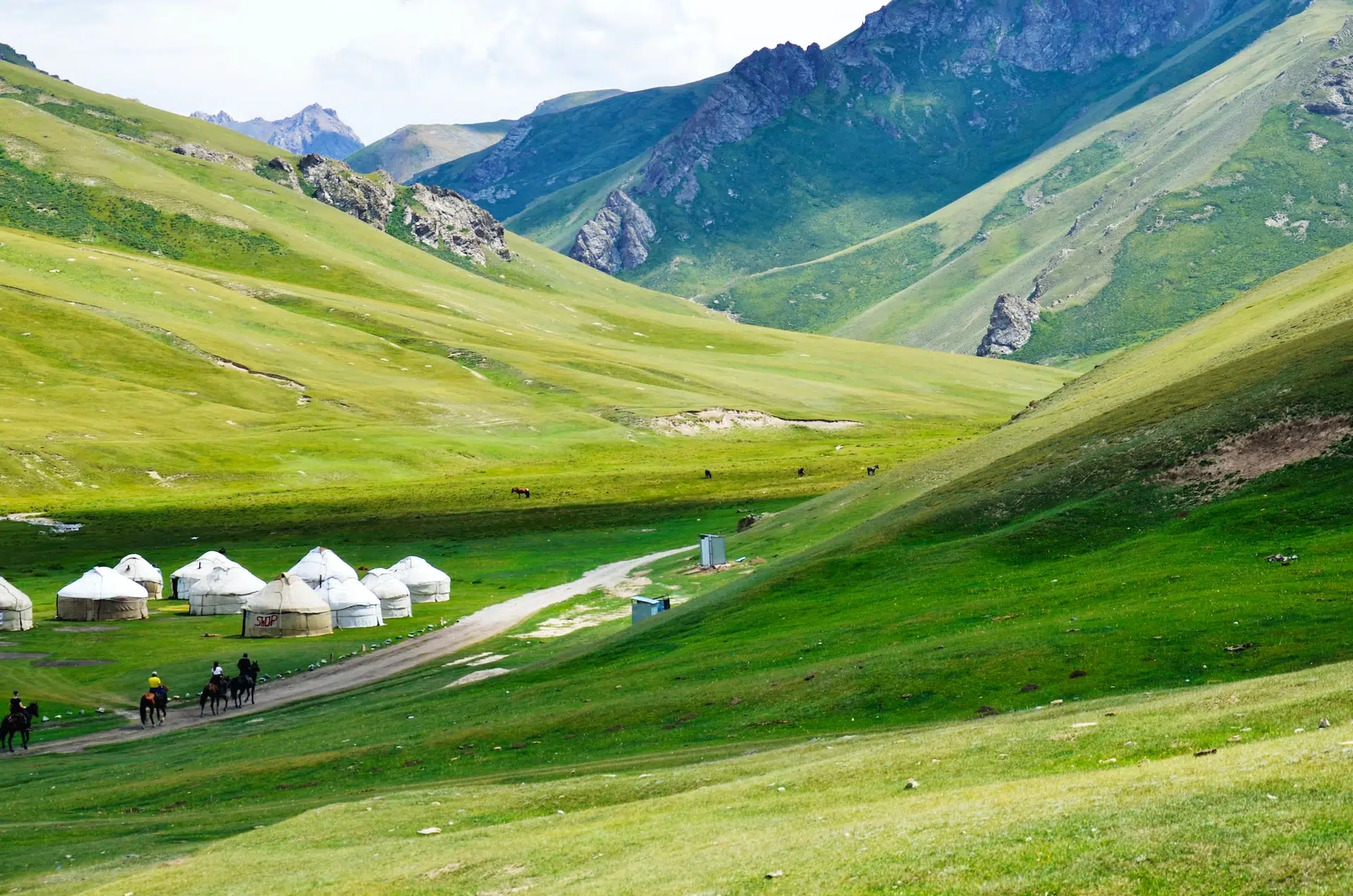Frequently Asked Questions About Kyrgyzstan
General FAQs for Kyrgyzstan
Which is the capital city of Kyrgyzstan?
What is best currency to use in Kyrgyzstan?
What are most spoken languages in Kyrgyzstan?
When is the best time to travel to Kyrgyzstan?
How many days are required for traveling in Kyrgyzstan?
What is the emergency number in Kyrgyzstan?
Places FAQs For Kyrgyzstan
What are the popular tourist places in Kyrgyzstan?
Kyrgyzstan is a country filled with natural beauty and culture, making it the perfect destination for travelers looking to explore! Here are some of the best places to visit in Kyrgyzstan:
– Bishkek: Explore the city’s vibrant nightlife and cultural attractions.
– Karakol: Visit the stunning lake and nearby glaciers.
– Issyk Kul Lake: Admire the turquoise waters of this majestic lake.
– Ala Archa National Park: Hike to alpine meadows, glacial lakes and snow-capped peaks.
– Osh: Discover ancient history and vibrant markets in Kyrgyzstan’s second largest city.
– Cholpon Ata: Relax on the sandy beaches and explore nearby petroglyphs.
– Son Kul Lake: Camp in the highlands and soak up breathtaking views of Kyrgyzstan’s vast landscape.
– Tash Rabat Caravanserai: Marvel at this 15th century Silk Road trading post.
– Son Kul Nature Reserve: Observe the unique wildlife and stunning mountain scenery of this pristine reserve.
How do tourist get around in Kyrgyzstan?
Budget FAQs For Kyrgyzstan
What is usual cost of traveling in Kyrgyzstan?
What is the cost of average meal in Kyrgyzstan?
What is the average cost of stay in Kyrgyzstan?
What is the cheapest time to visit Kyrgyzstan?
Culture FAQs For Kyrgyzstan
How are the people in Kyrgyzstan?
What is the most popular food in Kyrgyzstan?
– Lagman: a soup made from beef or lamb, vegetables, noodles and spices
– Beshbarmak: boiled meat served with noodles and a variety of sauces and herbs
– Plov/Osh: a rice dish cooked with vegetable oil, carrots, onions and mutton
– Manti: steamed dumplings filled with meat, potatoes and onions
– Samsa: pastries stuffed with beef or lamb and vegetables
– Shashlik: skewered pieces of marinated pork, chicken or beef grilled over an open fire
– Kuurdak: a stew made from mutton, potatoes and onion.
Which sport is the most popular in Kyrgyzstan?
What are the most popular religions in Kyrgyzstan?
What are the popular festivals celebrated in Kyrgyzstan?
– Nauryz: marking the first day of spring, it is celebrated with singing, dancing and feasting
– Kurman Ait: honoring the Kyrgyz national hero.
– Chychkan: a traditional horse race held in Central Asia.
– Ala Kukhuu: a celebration of traditional music.
– Ordooba: a harvest festival celebrated in the autumn months.
– Ysyakh: a celebration of nature and renewal.
– Uluu Tokoy: honoring the arrival of spring and symbolizing fertility.
What souvenirs to buy from Kyrgyzstan?
– Handcrafted carpets: made of goat and sheep wool, these often feature elaborate religious or tribal motifs.
– Embroidered items: colorful traditional Kyrgyz clothing such as shyrdaks, ala kiyiz and felt boots.
– Leather products: wallets, bags, horse saddles and horse bridles.
– Musical instruments: including the komuz and temir komuz.
– Jewelry: silver necklaces, earrings and bracelets, often featuring traditional Kyrgyz designs.
– Food items: dried fruits, honey, jams, nuts and local tea blends.
















